Projection technology has made it possible to experience movies, live events, video games, and presentations in unique and exciting ways. From the comfort of your own home or office you can enjoy a cinematic viewing experience by setting up a projector that turns any wall into an expansive display. But oftentimes people have questions about how far their projector should be from the screen. As much as this may seem like a straightforward query, there are several important factors to consider when positioning your projector for optimal picture output and quality—especially with today’s high-tech HD projectors! It’s time to dive into the importance of projector-to-screen distance and explore why getting it right matters so much for your digital media experiences!
What’s a Projector?
A projector is an optical device that displays an image, typically sourced from a computer or video player, onto a screen or wall. It utilizes light and lenses to project the image, allowing for a larger and more immersive viewing experience. Projectors allow people to watch movies, play games, and display presentations in larger-than-life form. They come in a variety of sizes and shapes and can be used for both home theater setups and business settings. [1]
Projectors also provide flexibility when it comes to presentations. They allow you to share data or information with a whole group at once, and projectors are great for displaying diagrams or graphs in a more visible form. Most modern projectors also have multiple connections, allowing you to connect laptops, tablets, and smartphones with ease.
Projectors can be expensive but they provide an impressive viewing experience that is well worth the cost. They make watching movies and playing games more enjoyable, while also providing flexibility when it comes to presentations. So if you’re looking for a way to enjoy entertainment or share information in an effective way, investing in a projector is definitely worth considering.
Projectors are more and more accessible these days, with different models available that fit any budget. When shopping for one, make sure to pay attention to the lumens rating and resolution, as these are the two main factors that determine a projector’s brightness and clarity. You should also check for compatibility and connection options, to make sure you’ll be able to connect all your devices without any issues. [2]
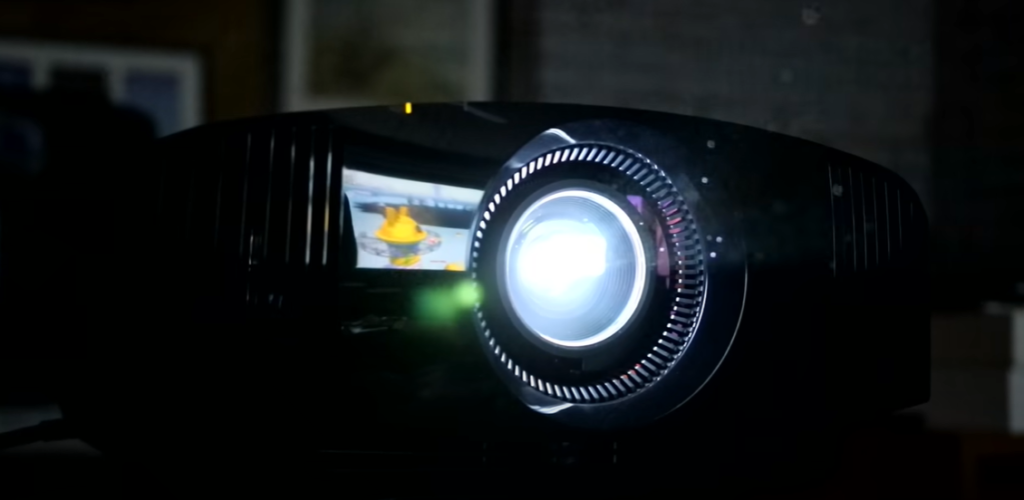
What Types of Projectors Are Available?
Projectors are becoming increasingly popular for a variety of applications. From home theater to business presentations, projectors offer a wide range of features and capabilities that make them an attractive option for many users. But with so many projectors on the market, it can be hard to decide which type is right for you. [3]
There are three main types of projectors that are available today: LCD, DLP, and LED. Each type of projector has its own advantages and disadvantages, so it’s important to consider the needs of your application before making a purchase decision.
- LCD projectors are the most common type and offer good image quality at an affordable price. They use LCD panels to create an image, which can be bright enough for most applications. The main downside to LCD projectors is that they are not as bright as some of the other options.
- DLP projectors use a series of microscopic mirrors to create an image, and are known for their excellent color accuracy and contrast ratio. They also offer great brightness levels and can be used in even the brightest rooms. The downside is that they tend to be more expensive than LCD projectors.
- LED projectors are the newest type of projector, and offer excellent image quality and energy efficiency. They use light-emitting diodes (LEDs) to create an image, which makes them brighter than both LCD and DLP projectors. However, they can also be more expensive than other types.
What’s Worth Watching on the Projector?
It’s finally movie night! Time to gather your friends, snacks, and drinks around the projector for a night of entertainment. With so many streaming options available these days, it can be hard to decide what to watch. Here are some suggestions for great movies that you can stream that will make sure everyone has an enjoyable time:
1. Get Out (2017)
This critically acclaimed horror movie from Jordan Peele is a must-watch for everyone. It follows Chris Washington, a young African American man who visits his white girlfriend’s family and discovers that something sinister is going on. The tension builds throughout the film, making it a perfect viewing experience in the dark with a projector.
2. Indiana Jones (1981)
This classic action-adventure movie follows archaeologist and adventurer Indiana Jones as he searches for the legendary Ark of the Covenant. The special effects, stunts, and humor make it a great pick for a projector night.
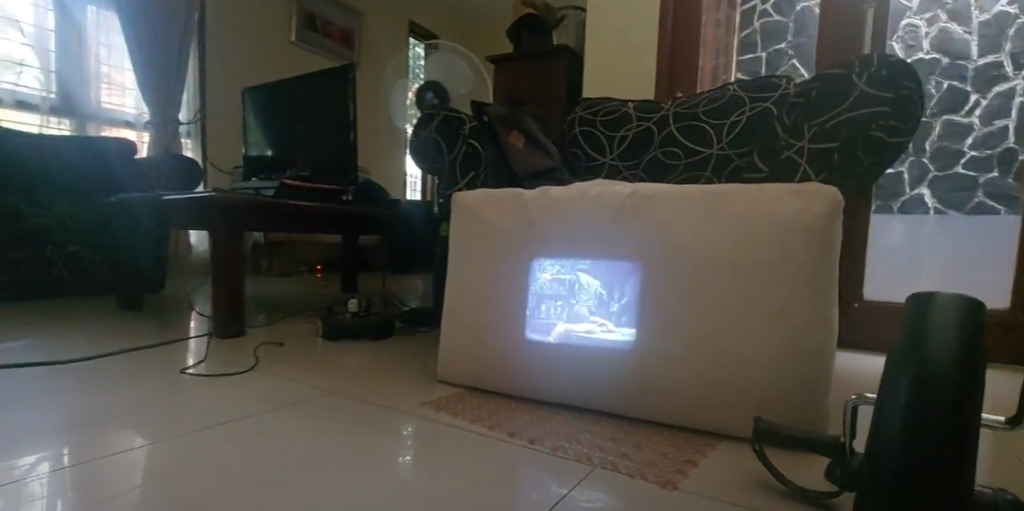
3. Coco (2017)
This animated film has received numerous awards and is one of Pixar’s most popular movies. It follows Miguel, a young boy from Mexico who goes on an extraordinary journey into the Land of the Dead to find his family’s past. The animation looks even more stunning on a projector and makes for a great family movie night.
4. The Notebook (2004)
This romantic drama stars Ryan Gosling and Rachel McAdams as two star-crossed lovers who are reunited after many years apart. It’s a tearjerker that looks beautiful on the big screen and will keep you enthralled until the very end.
5. The Princess Bride (1987)
This classic adventure movie features some of cinema’s most memorable characters, including Westley, Buttercup, and Inigo Montoya. It’s a fun and lighthearted movie that can be enjoyed by the whole family.
6. The Dark Knight (2008)
If you’re looking for an action-packed viewing experience, The Dark Knight is a great choice. This Batman movie stars Christian Bale as the titular character and features some amazing scenes of superheroics. It’s sure to keep you on the edge of your seat throughout the night!
7. The Goonies (1985)
This classic adventure film follows a group of kids searching for buried treasure in a small Oregon town. It’s filled with comedy, excitement, and heartwarming moments that make it a great movie for projector nights.
8. Spirited Away (2001)
This classic animated film from Hayao Miyazaki is a must-watch for anime fans. It follows Chihiro, a young girl who is transported to the spirit world and must find a way to escape. Its stunning animation is even more beautiful on the big screen, making it a great projector movie night pick. [4]

What is the Throw Distance for a Projector?
A projector’s throw distance is the distance from the lens of the projector to the projection surface, which can vary depending on the size of your room as well as type of projector. Throw distances are usually measured in feet or meters, so be sure to check the specifications of your projector before purchasing one to ensure that it is appropriate for your space.
For example, a short-throw projector has a shorter throw distance than a standard projector, meaning it can project a larger image at a closer range. This makes them ideal for smaller rooms or areas where you need to get an image up quickly. On the other hand, a standard projector has a longer throw distance and is better suited for larger rooms.
To get the best image quality for your space, you should also consider the brightness and resolution of your projector. The brighter the projector, the easier it will be to see in well-lit rooms, while a higher resolution projector will ensure that your images have more clarity. [5]
Why is Appropriately Distancing Your Projector Important?
It’s essential to ensure that this distance is set properly so that you can get the best possible image quality.
First, it is important to figure out what size of an image you would like to display. Knowing how wide and long you would like the image to be will help you decide how far away from the projection surface you should place your projector. If the projector is too close to the wall, the image will appear stretched or distorted. On the other hand, if it’s too far away, then there will be dead areas and parts of the image that won’t show up on the screen.
Next, you’ll need to consider the type of lens your projector has. Different lenses have different throw ratios, which are the distances between your projector and the wall or screen that will produce a certain size of image. If you don’t know what lens comes with your projector, it is easy to find out by looking up its make and model online.
Finally, you should check the projector’s manual to see if there are any recommended settings for the optimum distance between the projector and the projection surface. If so, it is important to follow these instructions as closely as possible in order to get the best image quality. [6]
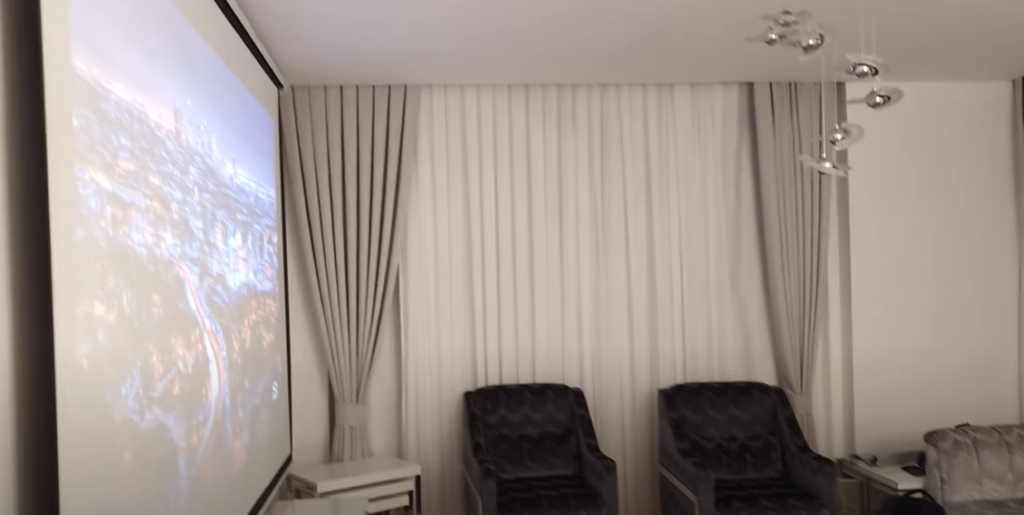
What Should Be the Distance Between Projector and Screen?
The optimal distance will depend on the size and model of your projector and screen. Generally speaking, there are three recommended distances you should consider:
- Short Throw Projections – A short throw projection is usually between 0.5m – 2.5m depending on the type of projector used.
- Medium Throw Projections – A medium throw projection is typically between 2.5m – 5.0m, again dependent on the model of projector being used.
- Long Throw Projections – For larger screens or projectors, a long throw distance can range from 5.0m – 10m.
The size of the image will also be determined by the distance between the projector and the screen. To ensure you get a full-size picture, you’ll need to make sure that your projector is placed far enough away from the screen. If it’s too close, it will result in an inaccurate projection and distorted images. You can use a special technique called “lens shifting” to adjust the distance and create a perfect projection.
Keep in mind that different types of projectors have different throw ratios, meaning the size of the image will vary depending on the make and model of your equipment. It’s important to look at the manufacturer’s instructions for setting up your projector correctly. [7]
How to Pick the Perfect Projector to Use?
Choosing the right projector is often a daunting task. With so many options available, it can be difficult to find the one that best meets your needs and budget. Before you start shopping for a projector, there are some key factors to consider:
- Brightness – The brightness of the projector is measured in lumens. You’ll want to choose a projector with enough lumens to provide an adequate picture in your desired environment. If you plan to use your projector in areas with a lot of ambient light, then opt for a higher lumen rating.
- Resolution – Resolution refers to the number of pixels used to output images. A higher resolution will provide sharper and more detailed pictures. Look for a projector that supports at least a 1080p resolution.
- Features – Look for features such as an inbuilt speaker, HDMI ports, wireless connectivity, and automatic keystone correction. Consider the type of presentations or movies you’ll be using your projector with when selecting additional features.
- Price – Set a budget before shopping for a projector and stick to it. You’ll typically find better features the more you spend, but that doesn’t mean you have to break the bank. That’s why it is important to determine which features are most important for your needs before shopping.
- Location – Consider the size of your space and the distance between the projector and screen. You’ll want to make sure that the projector is able to cover the entire area without distortion or fading.
- Warranty – As with any major purchase, it’s best to look for a projector that offers at least a one-year warranty. This will help you protect your investment and ensure that you are able to get the most out of your purchase. [8]
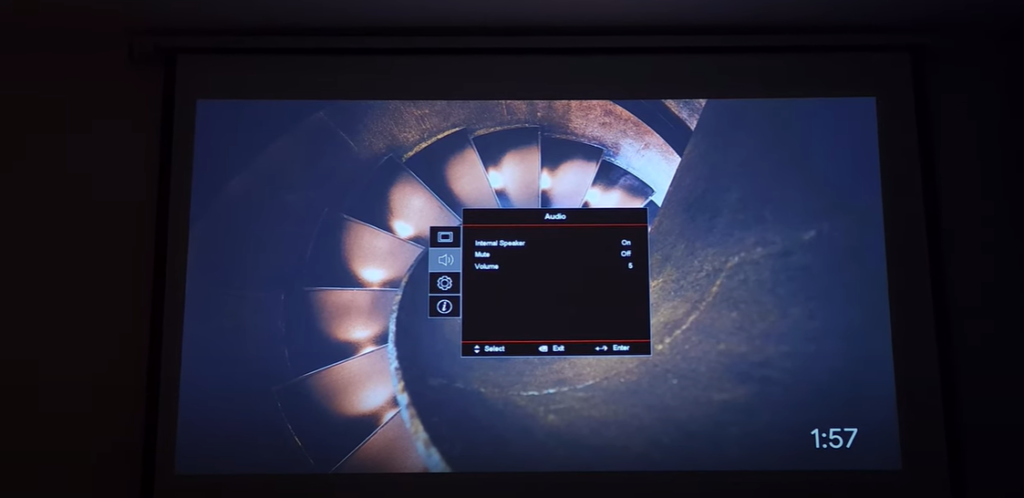
FAQs
How far should a long throw projector be from the wall?
The ideal distance of a long throw projector depends on the model and the size of your screen or wall. Generally, you should place it at least 3 meters from the screen to get a good image quality. However, most modern projectors have lens shift that allows you to adjust the projection angle without physically moving the projector. This makes it possible to place your projector even closer to the wall or screen. For more information on distance and placement, it’s best to check your projector’s user manual for specific instructions.
Can a projector be too far away?
If the projector is positioned too far away from the screen or surface it is projecting onto, there will not be enough focus and clarity in the image. To ensure optimal quality of your projected images, make sure that your projector is placed at an appropriate distance from the display surface (typically between 2.4 and 14 feet). Additionally, it’s crucial to consider the size of your image. If you are projecting a large image from a projector that is too far away, the projected image may be blurry or even unusable.
When setting up a projector, it’s also important to keep environmental factors in mind. Make sure that the projector is in an area with little to no light, as bright lights will cause glare and may reduce the clarity of your projected images. Additionally, consider the surface on which you are projecting. If it’s a wall or ceiling that has been painted recently, you should make sure that the paint has dried completely before using your projector.
Finally, if you notice that your projected image is still blurry, double-check the zoom and focus settings on your projector. Many projectors come with built-in tools for adjusting these settings, and making sure they are correctly adjusted can help ensure clarity in your projected images.
How much room do you need between the projector and screen?
The general rule of thumb is that your projector should be one-half to two-thirds of the distance from the screen. This allows for optimal image quality and sharpness. Depending on the size of your room or space, you may need to adjust this measurement slightly.
It’s also important to remember to position the projector so that the lens is directly in line with the center of your screen. This will ensure you get an even image no matter where people are sitting.
Once you’ve determined the distance for the projector, it’s time to focus on getting a clear picture. Depending on your model, this can be done manually or with a remote. Generally, you’ll want to adjust the focus ring until the image is as sharp as possible.
Do projectors have a minimum distance?
Yes, projectors do have a minimum distance. This is known as the throw distance and it is important to consider when buying a projector since the size of the image produced on the wall or screen will depend on this factor. Modern projectors generally have shorter throw distances than older models, but even so they still need to be placed at least several feet away from their target surface in order to get the best results. Generally speaking, the larger the projector you buy, the longer its throw distance will be. It is important to follow manufacturer instructions when deciding where to place a projector for optimal image quality.
Another factor that should be taken into account is the amount of ambient light present in the room. A projector will always produce the clearest image in a dark environment, so if possible it should be placed in a room with minimal light sources that could interfere with the picture quality and clarity. It is also important to keep the projector lens clean at all times, as dust or dirt can cause significant changes in the projected image quality. Taking these factors into consideration when deciding on the placement of a projector will ensure that you are able to get the best image quality possible.
Useful Video: Recommended Screen Size for Viewing Distance | How to Calculate Screen Size for Projector?
Final Thoughts
In conclusion, determining how far a projector should be from the screen involves several factors, including the type of projector you are using, the resolution of your projection, the desired size of the projected image on the screen, and your ambient lighting conditions. Ultimately, it all boils down to personal preference and desired effect. So experiment with varying distances and find out what works best for you! To facilitate this process, take accurate measurements just to make sure everything is in balance. Your final setup will surely be worth it if done with precision and care. After all, nothing beats watching movies or TV shows on a big screen with vivid colors and perfect clarity that makes you feel like you’re there in person. So grab those tape measures and start positioning your projector today!
References:
- https://www.computerhope.com/jargon/p/projecto.htm
- https://www.javatpoint.com/what-is-a-projector
- https://www.moglix.com/articles/types-of-projectors-based-on-their-applications
- https://www.theprojectorexpert.com/movies-to-stream-with-projector/
- https://epson.com/projector-guide-how-to-buy-a-projector-throw-distance-and-positioning
- https://www.lg.com/ca_en/support/product-help/CT20098013-20153023817062
- https://www.projectorcentral.com/projection-calculator-pro.cfm
- https://www.bhphotovideo.com/explora/video/buying-guide/buying-guide-to-projectors

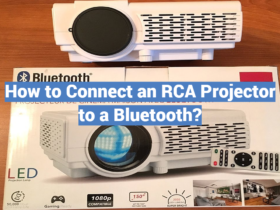
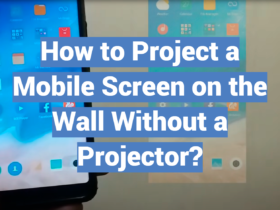

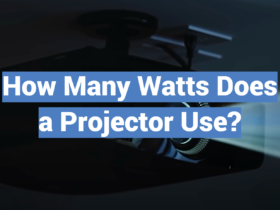
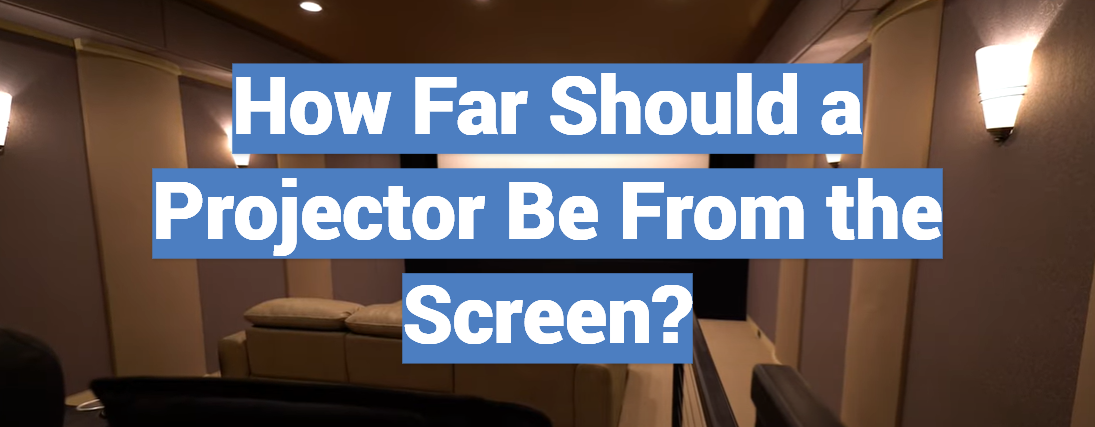

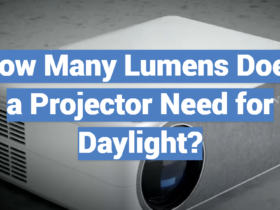

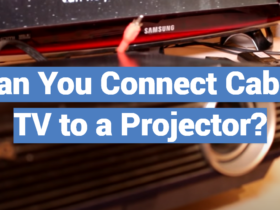
Leave a Review